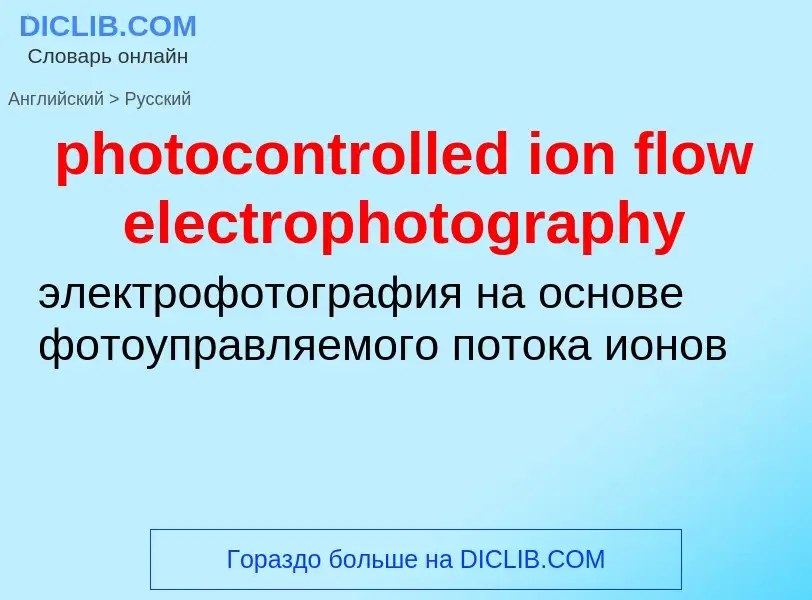Translation and analysis of words by ChatGPT artificial intelligence
On this page you can get a detailed analysis of a word or phrase, produced by the best artificial intelligence technology to date:
- how the word is used
- frequency of use
- it is used more often in oral or written speech
- word translation options
- usage examples (several phrases with translation)
- etymology
photocontrolled ion flow electrophotography - translation to russian
['aiənprə'pʌlʃ(ə)n]
космонавтика
ионный ракетный двигатель
['aiən'rɔkit]
общая лексика
ракета с ионным двигателем
ионная ракета
ионный ракетный двигатель
ионный реактивный
Definition
Wikipedia

Selected-ion flow-tube mass spectrometry (SIFT-MS) is a quantitative mass spectrometry technique for trace gas analysis which involves the chemical ionization of trace volatile compounds by selected positive precursor ions during a well-defined time period along a flow tube. Absolute concentrations of trace compounds present in air, breath or the headspace of bottled liquid samples can be calculated in real time from the ratio of the precursor and product ion signal ratios, without the need for sample preparation or calibration with standard mixtures. The detection limit of commercially available SIFT-MS instruments extends to the single digit pptv range.
The instrument is an extension of the selected ion flow tube, SIFT, technique, which was first described in 1976 by Adams and Smith. It is a fast flow tube/ion swarm method to react positive or negative ions with atoms and molecules under truly thermalised conditions over a wide range of temperatures. It has been used extensively to study ion-molecule reaction kinetics. Its application to ionospheric and interstellar ion chemistry over a 20-year period has been crucial to the advancement and understanding of these topics.
SIFT-MS was initially developed for use in human breath analysis, and has shown great promise as a non-invasive tool for physiological monitoring and disease diagnosis. It has since shown potential for use across a wide variety of fields, particularly in the life sciences, such as agriculture and animal husbandry, environmental research and food technology.
SIFT-MS has been popularised as a technology which is sold and marketed by Syft Technologies based in Christchurch, New Zealand.
The SIFT technique, which is the basis of SIFT-MS, was conceived and developed nearly 40 years ago in Birmingham University UK by N.G. Adams and David. Smith. Professor David Smith passed away 15/02/2023







